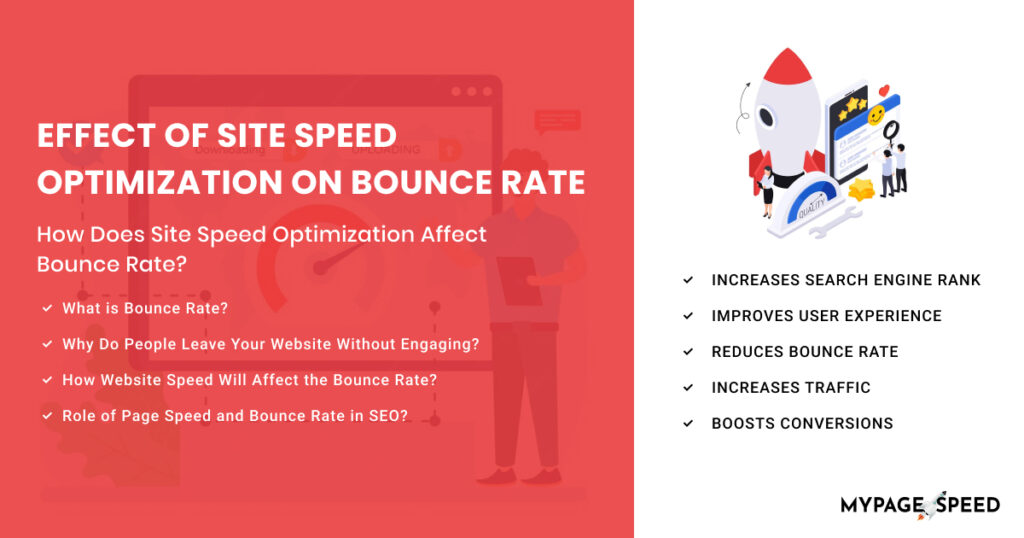What is your next move after opening a website that takes time to load? I’m guessing you’re going to go tap on the back button of your device, isn’t it? When surfing the web, we all are equally impatient. While you can’t teach your audience to be patient, you can change the loading speed of your website. You’ll see a tremendous change in your site’s bounce rate once you do that. Let’s see how.
What is Bounce Rate?
Google Analytics records all aspects of user behaviour. This includes users leaving the website without clicking anything. The percentage of visitors showing such behaviour is called bounce rate. So, if 40 out of 100 visitors leave your website without clicking anything, you have 40% bounce rate.
However, bounce rate does not include people visiting your website and clicking on another link on that page. In fact, it is a sign of engagement. This is because it shows you have something in your page that the users found relevant. It could be a link, a button, or other pages in your website.
Why Do People Leave Your Website Without Engaging?
People can leave your website without engaging in it for two reasons. They include poor user experience and lack of relevance, appeal, or information in your content.
User experience includes a lot of factors. These include page speed, interface, navigation ease, aesthetics, and functionality. Let’s briefly look at all:
Page Speed: If a website doesn’t open in 3 seconds, the user will automatically get bugged and leave the website right away.
Interface and Navigation: If the interface is not user-friendly, the visitor will find it difficult to navigate through pages and leave the website than trying to figure it out.
Aesthetics: If the visitor doesn’t find the design or look and feel of the website appealing, he might get bored and check out something else.
Functionality: If there are technical issues in your site, users may have a tough time scrolling through or clicking on links or buttons on your website, encouraging them to leave.
While you need to take care of every factor, having a good page speed is of primary importance. This is because no matter how good your site’s aesthetics, content, and interface is, if it doesn’t load on time, the user is not going to see any of it.
How Website Speed Will Affect the Bounce Rate
As your website takes lesser time to open, your bounce rate starts going down. Likewise, it increases when your website becomes slow. The data has been alarming as per research. If your website loads in 2 seconds, your bounce rate is as low as 9%. However, if it takes only 3 more seconds to load your website, it can shoot up to 38%. The probability of increase in bounce rate is 32% if the page takes 3 more seconds to load.
This is how website speed affects your traffic. It is one of the main reasons why it is so important for your website to load in less than 3 seconds.
Role of Page Speed and Bounce Rate in SEO
Considering that the algorithm of search engines is in sync with common user behaviour, both bounce rate and page speed are major ranking factors in SEO.
Google does not rank slow website considering that users will not prefer visiting those. Even if an individual visits your website through other sources such as social media or backlinks from third-party sites, you have greater odds of receiving a higher bounce rate than engagement or conversions. This increase in bounce rate further reduces your probability to rank on the search engines.
Thus, if you don’t want to miss out on the vast audience that the search engines can provide you for your business, you need to ensure that your website loads within 3 seconds. If your website is slow, then you can contact me and I can fix the problem for you. With the help of my customized coding solutions, I can eliminate all the causes that are making your website slow and improve its loading speed.
